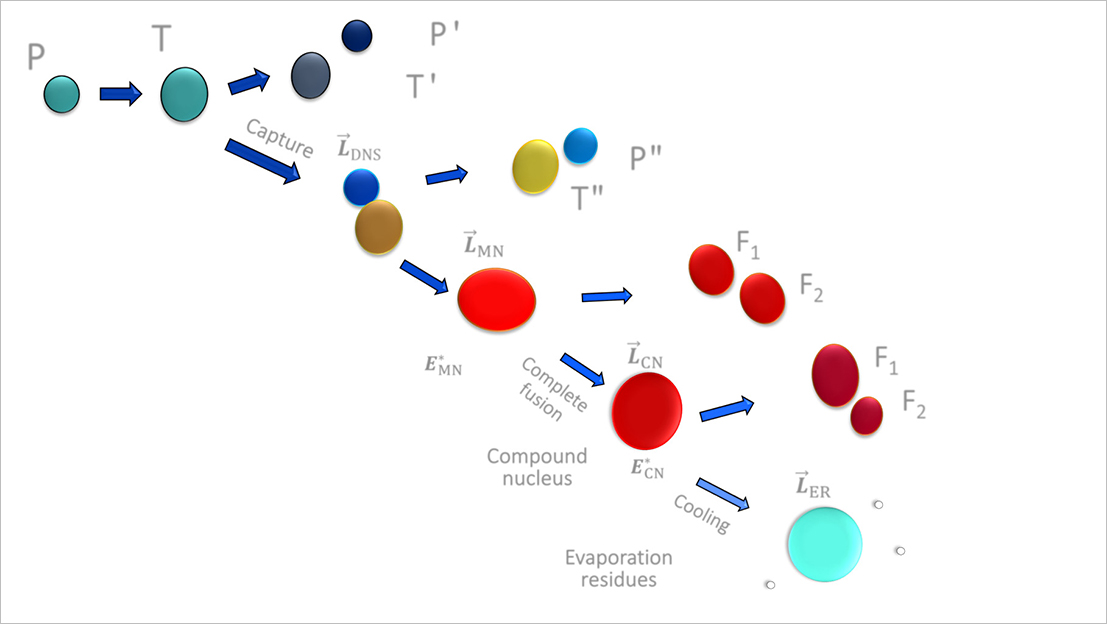Study on hindrance to complete nuclear fusion
News, 31 July 2024
Scientists of the Laboratory of Theoretical Physics at JINR, Institute of Nuclear Physics of the Academy of Sciences of Uzbekistan, and Mirzo Ulugbek National University of Uzbekistan studied the effect of the charge asymmetry and orbital angular momentum in the entrance channel on the hindrance to complete nuclear fusion of atomic nuclei.
The hindrance to complete fusion is studied as a function of the charge asymmetry of colliding nuclei and orbital angular momentum of the collision. The formation and evolution of a dinuclear system (DNS) in the heavy-ion collisions at energies near the Coulomb barrier is calculated in the DNS model. The DNS evolution is considered as nucleon transfer between its fragments.
 A sketch of the sequences of nuclear reaction channels, which overcome competitions in different stages of interaction processes of dinuclear system fragments
A sketch of the sequences of nuclear reaction channels, which overcome competitions in different stages of interaction processes of dinuclear system fragments
The results prove that a hindrance at formation of a compound nucleus (CN) is connected with the quasifission process, the process of DNS breaking up into products until the CN reaches the equilibrated state. The role of the angular momentum in the charge (mass) distribution of the reaction products for the given mass asymmetry of the colliding nuclei is demonstrated. The results of this work are compared with the measured data for the quasifission yields in the 12C+204Pb and 48Ca+168Er reactions to show the role of the mass asymmetry of the reaction entrance channel.
The work was published in Physical Review C in May 2024. Authors: Elzod Khusanov, Avazbek Nasirov, and Mukhtorali Nishonov.